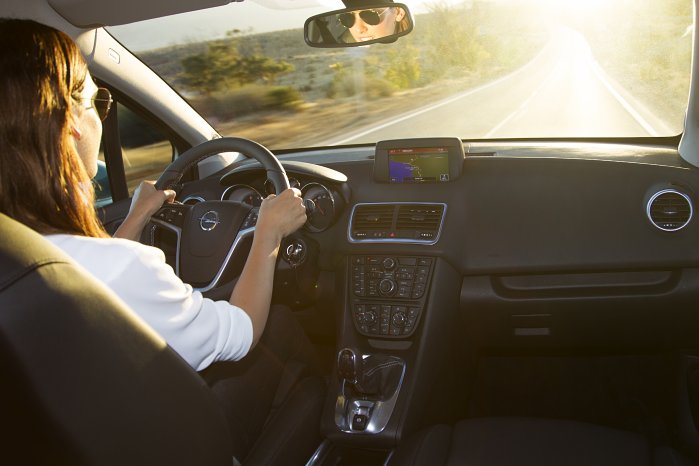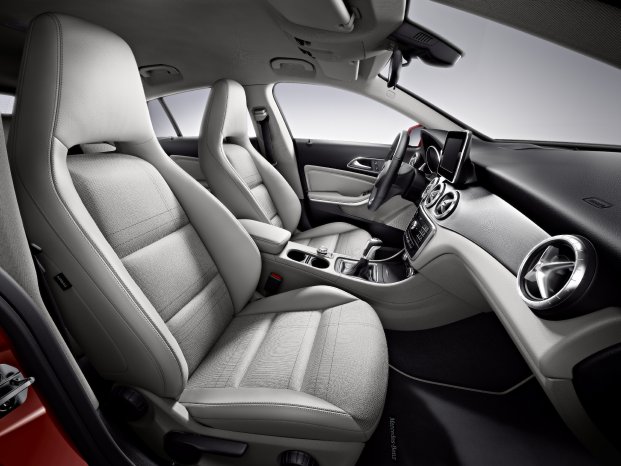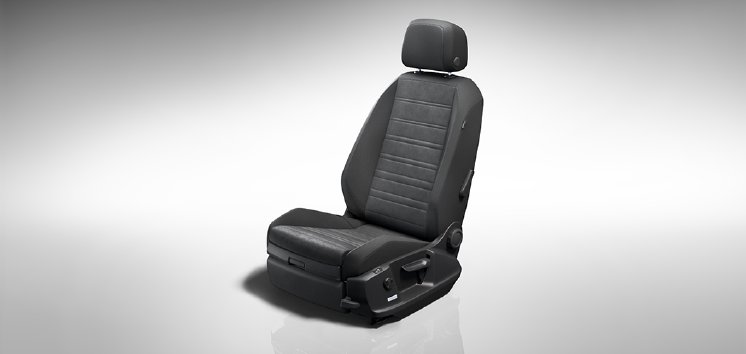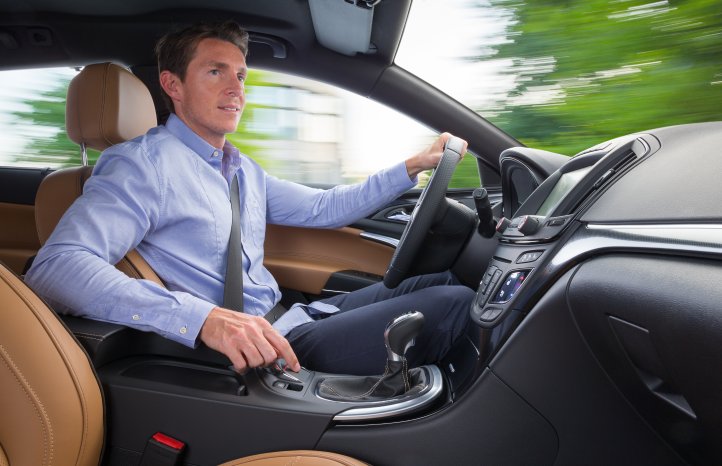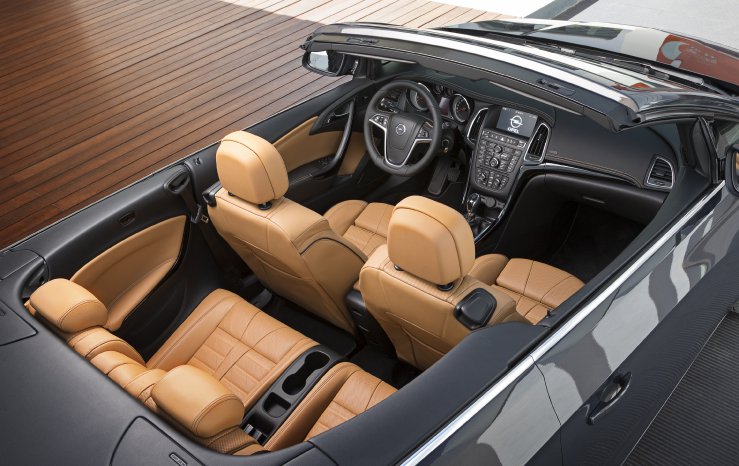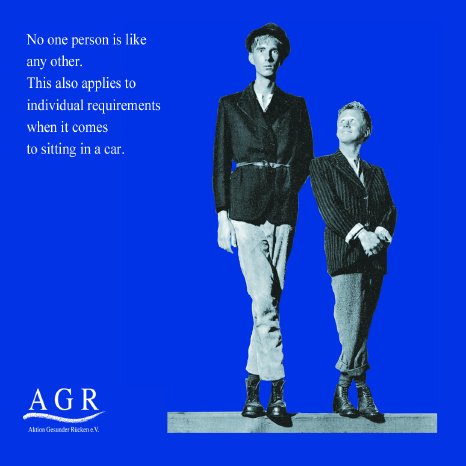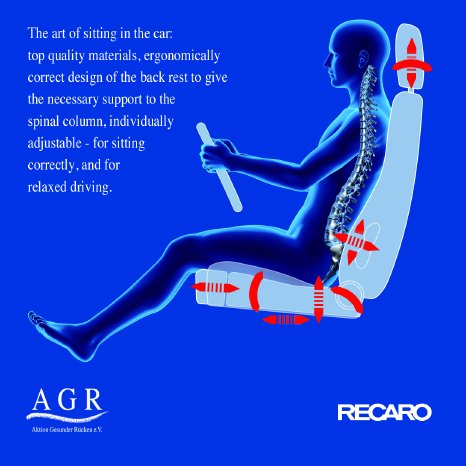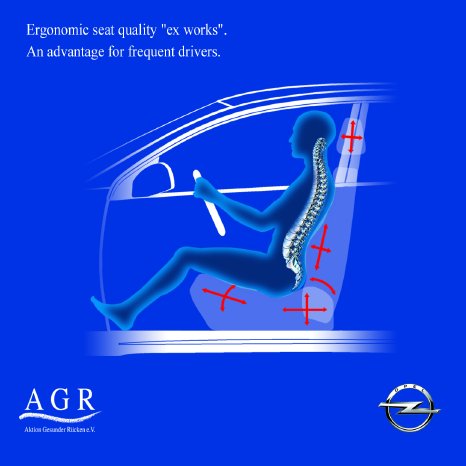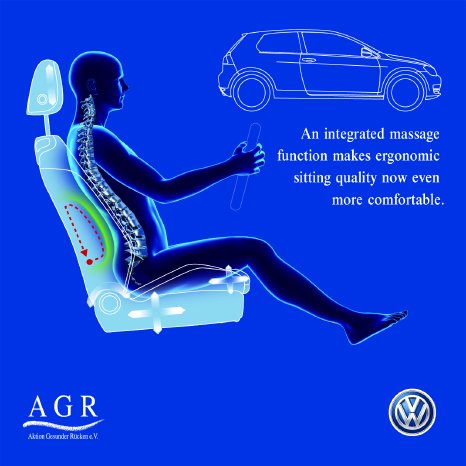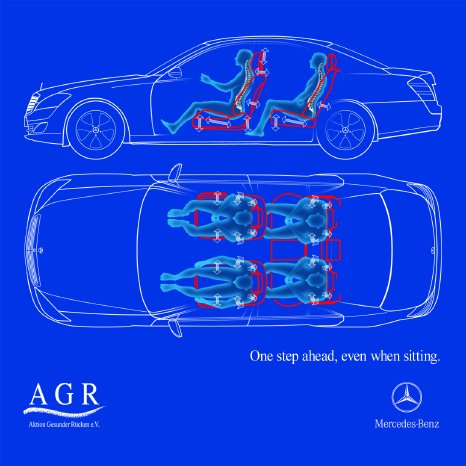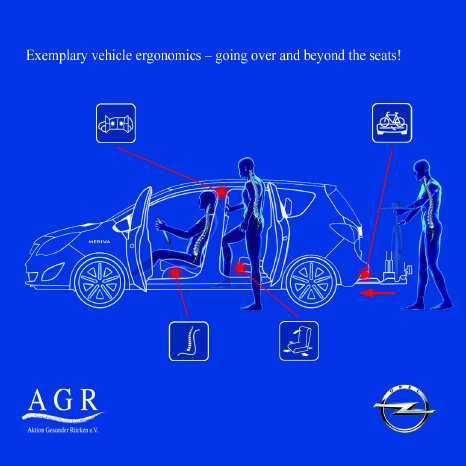Developments in ergonomic car seats are being pioneered by some car manufacturers who already offer them as an optional or even standard feature. Unfortunately, other manufacturers are still completely unaware of their significance. Anyone who has sat for hours on end in a car on a seat that is not ergonomically designed knows exactly how much tension they feel in their backs after such a journey, while backache easily becomes the constant companion for frequent drivers. The longer and more frequent the car journeys, the more important it is to have back-friendly car seats. Car seats that have been tested by the AGR (Campaign for Healthier Backs) and awarded the AGR seal of approval for being particularly back-friendly must have the following characteristics:
- The car seat has a firm basic structure and adapts to the natural shape of the spinal column. Side supports for the seat surface and backrest give the body additional support.
- The lumbar spine is supported with an individually adjustable 4-way lordosis support.
- The head rest can be adjusted up to the upper edge of the head to minimise the risk of injuries in an accident.
- The backrest is high enough to support the entire back. Fully variable backrest adjustment makes it easier to adapt.
- It must be possible to adjust the height, tilt and depth of the seat for optimum adjustment to each individual driver.
- Seat heating, a ventilation system and appropriate upholstery materials contribute to a good sitting climate.
Today it is no longer as hard to find such car seats as it was ten or twenty years ago. From autumn 2015 for example, Mercedes will be offering AGR-certified driver's seats and in some cases also front passenger seats in new cars in all vehicle categories; S-Class cars even have certified rear seats.
The pioneer for back-friendly car seats is Adam Opel AG. Opel declared its intention back in 2003 to offer a back-friendly car seat in all vehicle categories. And Opel has nearly achieved this goal, with AGR seats available (as driver's and front passenger seats) in all models apart from the very smallest cars.
Volkswagen also offers AGR-certified sitting comfort. At the moment, the ergonomic "ergoActive" and "ergoComfort" seats are currently available in the Golf 7 (including Variant and Sportsvan), Passat and in the Touran (also as front passenger seats) and soon also in the new Tiguan. In the Phaeton, even rear passengers will find seats with the AGR seal of approval.
Hyundai as the fourth largest car maker will be presenting a premium-segment vehicle in December 2015 with AGR-certified driver's and passenger seats together with certified rear seats. Initially the vehicle will be available on the Asian and American markets.
Ergonomic car seats as retrofit solution
Unfortunately, many drivers don't realise that their car seat is responsible for the painful tension they feel in their back muscles until after they have driven many kilometres. If this is not reason enough to buy a new car, then special retrofitting seats are the best choice. AGR-certified retrofitting seats are available from Recaro for both cars and trucks, and can be integrated in nearly all common vehicle models. The Recaro seats with AGR seal of approval also fulfil all key criteria and are truly beneficial for the back. On selling the vehicle, they can be removed relatively easily and fitted in the next car, thus facilitating back-friendly sitting comfort for years to come.
Even the best seat still has to be adjusted correctly.
The overall concept of the "back-friendly car seat" is rounded off by the correct adjustment: you can only profit from a back-friendly seat if it is correctly adjusted. How to adjust your car seat step-by-step:
Ideal adjustment of your car seat:
- Move your buttocks right up against the backrest of the seat. Now adjust your seat so that your legs are slightly angled when the pedals are pressed right down.
- The tilt of the backrest must allow you to hold the steering wheel with your arms slightly angled. To achieve this, adjust the backrest to an angle of approx. 110 degrees. Make sure that your shoulders remain in contact with the backrest even when steering.
- If the backrest has a head adjustment, only change this if the normal shape of the backrest does not give your shoulders enough support. Less is more in this context.
- Now select the right seat height for you. Sit as high as possible, while still leaving a hand's breadth of space between your head and the roofliner.
- Adjust the seat tilt so that your thighs rest gently on the seat surface and you can press the pedals through without having to apply too much force.
- After adjusting the seat length, you should still be able to fit 2-3 fingers between the front edge of the seat and the back of your knees.
- Adjust the headrest so that it protects your head but does not support your neck. If the setting of the headrest is too low, this can cause severe injuries to the head and cervical spine in the event of a rear-impact crash. Ideal: upper edge headrest = upper edge head.
- If the backrest and seat surface have adjustable side supports, ensure that these are in gentle contact with the body without being constrictive.
- The natural shape of your lumbar spine is supported by the lordosis support. Always adjust this from bottom to top. The pelvis (belt line) is the most important area for support.
About the Campaign for Healthier Backs and the AGR seal of approval The Campaign for Healthier Backs has been dedicated to the prevention and therapy of endemic backache since it was founded in 1995. Its "certified & recommended" seal of approval is an important decision-making aid for consumers. Various everyday products from various different parts of life, including bed systems, chairs and leisure equipment, can be awarded the seal of approval following strict testing by a committee of medical and therapeutic experts and being classified as particularly back-friendly. For more information, please go to: www.agr-ev.de/en.
IN BRIEF
Even a new car can become a backache trap if the car seats are not back-friendly. Fortunately, car makers are increasingly opting for ergonomic seats but these are still not a standard feature. The AGR (Campaign for Healthier Backs) therefore recommends that you carefully analyse the seats when buying a car, opting ideally for an AGR-certified car seat. Back-friendly retrofitting car seats are a good solution if this is not the time for a new car. More information: www.agr-ev.de/en
